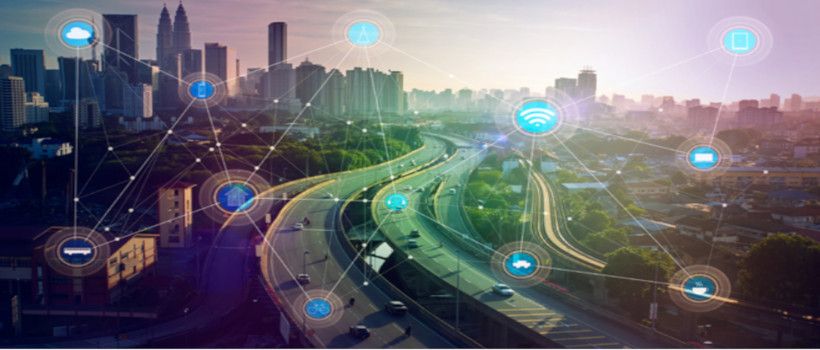The tourism sector faces continuous changes that can create new business opportunities, in this context smart destinations arise. Smart destinations are innovative spaces, accessible and consolidated on a technological infrastructure. Through this infrastructure, stands out the commitment with the environment, culture and socioeconomic factors of the destination to efficiently manage resources and meet the needs of its residents. For this reason, within the program of “FITUR know-how”, a presentation was carried out by Adrián Nogales (Secretary of COIT), Carlos Ventura (Responsible for Adif travelers) and José Luis Fernández Carnero (General Director of Strategy of Televés) that posed various positions and developments of smart tourism destinations as a business model.

For Adrián Nogales, the axis on which an smart destination should be developed are the buildings. These must undergo a transition to become smart entities and understand them through the Internet of Things (IoT). Buildings such as train stations, buses, airports, hospitals, private buildings, etc.; should be considered as a generator of information and useful data. However, to normalize these objects, it is essential to connect them with your ecosystem, including all the goods and services around. One of the key factors to interconnect all the elements that are part of this ecosystem is to implement 5G technology and enhance wireless communications.
One of the main points for the destination’s connections are its entry points: as could be the railway stations. Carlos Ventura, on behalf of Adif, exposed its key role. It is intended to improve the experience in the stations so that they become personal and adapt to the citizens and their needs through the use of metadata and interconnectivity with the other intelligent objects of the area in which they are located. Like the previous speaker, he defends that the stations have to be IoT nodes, participating and communicating with the cities and their surroundings.
This transformation must be planned and carried out in an organised manner, envisioning the goals and the steps to follow one by one. To this end, as an engine of this process, an action plan has been drawn up jointly with the Ministerio de Fomento to detail how to use, produce and protect the data and how to approach users.

The objective is to provide the smart destinations with certain rules to anticipate the users’ needs and constantly surprise them, which would allow a continuous learning and a progressive increase of the interaction with them. When a traveler arrives at a destination, they must be able to offer the best transport options for each occasion, as well as managing the city’s tourism, directing the attention points of tourists based on the number of visitors at each point or attraction. To reach this goal would be required a normalization that allows dialogue among the entities of the entire ecosystem; send and receive information and be sensitive to their changes, creating a common language to be understood. However, it must be clear that for the exchange of information that is going to occur it is necessary to establish the rules of the game, which should be based on 5 pillars: hyperconnectivity, sustainability, security, mobility and tourism.
Thus reinforces the idea that tourist destinations are currently living in a stage of transformation and change that aims to evolve together with tourists through information. Therefore, José Luis Fernández Carnero (Televés) understands the destination as a management platform which must manage the main objectives of this transformation: improve the tourist experience, anticipate their needs, surprise them with the best solution and reduce the tourism impact in the destination.
In addition, the technology developed to date allows for more efficient management and control of spending, as well as mobility
This transformation does not only include smart tourist destinations or smart cities, but is applicable to any entity that has a tourism management platform capable of developing such a strategy, provided with the data of the hotels and agents involved. The key will be in the treatment of the collected data with artificial intelligence (AI), which will allow a better use of these. In this way, the only requirement to be able to start up said project is that the destination is completely digitized. For this purpose we must first digitize what is considered the basic cell of the destinations and its main source of information, the hotel. The business model would then be focused on the data collection in the installed processes for the generation of critical alarms (fires, high levels of CO2, etc.), provide sustainability indicators, work as a pollution sensor, as an information unit of consumption of services and products, traffic flows, inflow, saturation, etc.

All these strategies are supported by public administrations, which play a fundamental role. In Spain, the Spanish Standardization Association (UNE) is the organization that leads the development of tourist destinations through Red.es. The projects developed in Spain have been recognized internationally, becoming benchmarks for the European and global community.
Reinforcing this position, the Smart Tourist Destinations Network was also presented at FITUR by Isabel Oliver, Secretary of State for Tourism. In addition, were presented the ITH Smart Destination Awards to the best technological solutions for smart destinations in five categories: accessibility, tourist-resident interaction, promotion and marketing, sustainability and governance. These projects reinforce Spain’s position as a leader in the development and promotion of smart tourist destinations. As a conclusion, that the final objective of this digitization and normalization process of tourist destinations could be to generate a tourism development strategy based on the data obtained by the entire destination in a global way, incorporating new technology solutions to enhance the destination efficiency.








